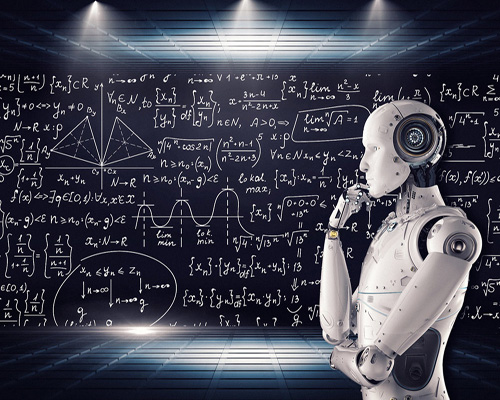
Machine Learning as the name, suggests here something which is learning made by machines. It broadly refers to a system that is capable of autonomous acquiring and integration of knowledge provided to the machines. It is primarily concern with the accuracy and the effectiveness of the computer system. In Machine Learning we basically work on the pattern which is a combination of clusters containing information.
Machine Learning is a problem-solving tool that converting our data which may be in the form of text, graphics, videos or other multimedia data into some useful information. It firstly converts and interpret the data and act on it accordingly to optimize performance criteria using past experiences. So Machine Learning is a combination of computer science, engineering, and statistics. It is implemented in any stream or field.
In the traditional programming approach, we do have some input data based on which we create a program and computer produces the output. On the other hand in Machine Learning we only have the input data and the final outcome but the program/method to reach that outcome is proposed by the system.
Why Machine Learning?
- It requires no intervention from human beings like an automated production line in industries
- It is having black-box expertises like driver-less cars, voice recognition system or face detection techniques.
- It identifies the rapidly changing phenomena like fraud detection in financial instruments, credit scoring, etc.
- It’s best to work under any customization or personalization problems.
Machine learning generally categorized into three parts which includes
- Supervised Learning
- Unsupervised Learning
- Reinforcement
The supervised learning is based on a teacher’s oriented approach that means we have certain trained data in which we have predefined outputs. On the other hand, unsupervised learning totally depends on test data which performs and provides results on the basis of pattern recognition. The third type of reinforcement is based on Reward and Feedback. The rewards are getting from the set of activities performed onto our data while feedback is totally based on the environment.
The basic steps involved in Machine Learning are:
- Collect the data
- Refine the collected data and prepare the input data
- Analyze the input data based on patterns and the environment boundaries
- Developed or trained the algorithm for Machine Learning
- Test the developed/trained algorithms and then implement it.
The Machine Learning applications can be designed under three parameters which include Representation, Evaluation, and Optimization. The Representation can be made by either Decision Tree, Logic programs, Graphical models, Neural Networks, etc. The Evaluation can be measured by its accuracy, precision, and recall, the cost versus utility, margin, entropy, etc. Optimization is associated with the actions of making the best and efficient use of resources.
On a concluding note Machine Learning is one of the rapidly growing fields whose applicability is not only restricted to a single area. It is also adopted and applicable in industries commercially as it solves complex problems that take lots of time and effort for humans. On the other hand, we go for a cost-effective solution that predicts the results more accurately and economically.
This technical article has contributed by Sh. Nikhil Ranjan, Sr. Faculty, NIELIT Haridwar.



